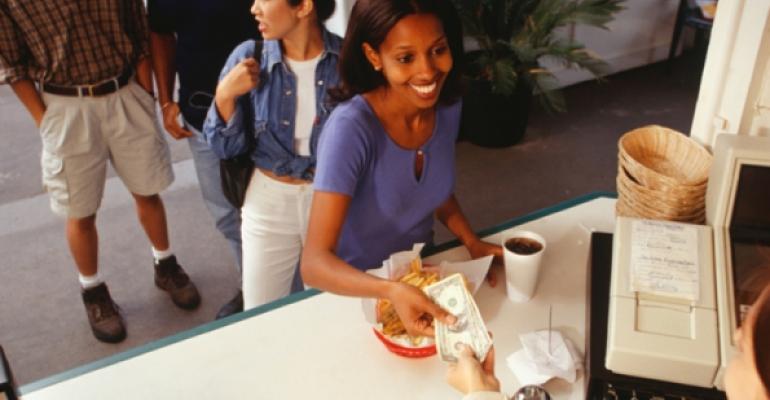Improving traffic at quick-service restaurants led to an increase in same-store sales in December, and helped the restaurant industry finish 2015 strong, according to the latest MillerPulse report.
Industrywide same-store sales rose 2.2 percent during the month, according to the survey.
Quick-service same-store sales rose 2.9 percent, the segment’s best performance since September. Quick-service traffic increased 1.5 percent, the best result since January 2015.
The traffic suggests that discounting in quick service appears to be luring customers at the expense of average check.
“There’s definitely some companies driving traffic with good value,” said Larry Miller, co-founder of the survey.
That traffic appears to be coming from casual dining: The segment saw traffic decline 0.6 percent in December.
Casual-dining chains have been giving up share to limited-service concepts for the better part of a decade. That trend continued in December, when casual-dining same-store sales fell 0.6 percent. Casual-dining sales increased 1.4 percent, lagging behind quick-service concepts by 1.5 percentage points.
“At the margin, they’re taking some from casual dining,” Miller said. “Casual dining had been improving, but now it’s showing a little softness. You also have some other people — certainly Chipotle — that are giving up traffic.”
The industrywide December same-store sales increase was stronger than expected. Restaurants faced difficult comparisons from the year before, so 2.2-percent same-store sales growth — rising from 1.5 percent in November — was higher than anticipated.
Industrywide same-store sales rose 6.5 percent on a two-year basis, which can factor out one-time issues that affect sales during the year, like weather, and marked the strongest result in years.
“December was a pretty good month,” Miller said. “That was a surprise.” Miller said he expected same-store sales growth to be in the 1-percent range.
But for the most part, traffic growth in the industry was elusive, coming in flat for the year, Miller said. Therefore, companies saw sales improve due to price increases or less discounting, but not more customers.
“Either restaurants were effective in promoting average check, or customers were willing to spend more money,” Miller said.
Indeed, the lack of traffic came despite a number of tailwinds that should have propelled the industry forward. Gas prices were low. Unemployment fell to 5 percent as the economy created jobs.
Yet, while oil prices might have given some consumers the financial wherewithal to spend more money at restaurants, it might have hurt the economy. This was true in oil-rich states like Texas, where chains such as Del Frisco’s said their restaurants were struggling.
“I’d rather see higher energy prices for more stability in the economy,” Miller said.
The lack of traffic growth means that the industry remains a market-share game. As chains like quick-service restaurants add traffic, other concepts have to lose traffic.
Contact Jonathan Maze at [email protected].
Follow him on Twitter: @jonathanmaze




